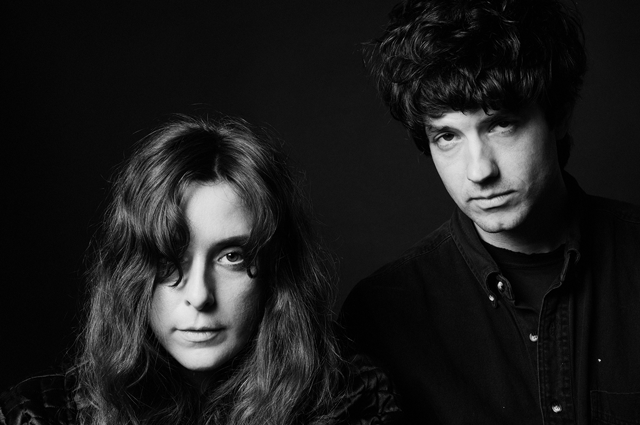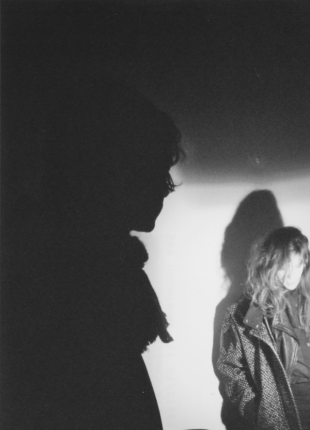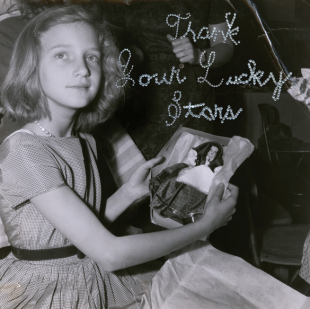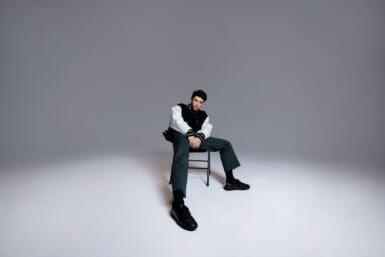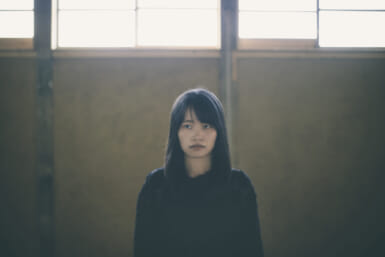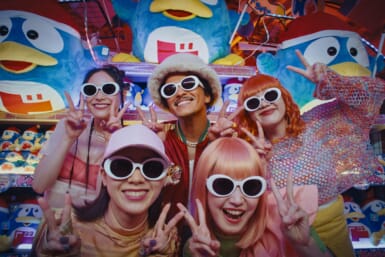Victoria Legrand hauntingly coos “Hush, don’t you cry,” amidst Alex Scally’s poltergeist-y electronic guitar strums on “All Your Yeahs,” making the song sound like an otherworldly lullaby.
By Kyle Mullin
That innocence in the face of menace isn’t just captured on this tune, but throughout the album it was released on, “Thank Your Lucky Stars,” which followed “Depression Cherry,” the dream pop duo’s preceding LP, by only two short months this past October. Legrand and Scally, who call themselves Beach House, even found the perfect cover art to evoke that fleetingly youthful tone – a stark black-and-white photo of a young girl ripping off a doll’s packaging, but staring past the photographer, as if she can recognize the encroaching future that will make her outgrow such playthings.
That image is deeply personal for Legrand. But, as is the case with all things Beach House, she and Scally’s decision to use the photo was less deliberate than intuitive. She described the benefits of their partnership during a recent interview with Weekender, before explaining why they released “Stars” so soon after Cherry, revealing the identity of that girl in the photo, and more.
How did it feel to surprise fans and put out a new album soon?
It was good, and I think it shocked people, which I found hilarious.
Why hilarious?
From an industry standpoint, people thought about the difficulty, because it was twice as much material in the same recording session, finding twice as much artwork, doing twice the work. Doing that so quickly revealed the systems we weren’t working in – we weren’t giving “Thank Your Lucky Stars” to the press months in advance, we weren’t doing a promotion campaign, we weren’t working in that system, and that was refreshing.
Both albums’ songs were recorded in the same sessions. How did you know which tunes belonged to “Stars”?
These newer songs have more grit. And the narratives are different from “Depression Cherry.” The scenes detail alcoholism and abuse. They rarely talk about men: there’s a strong female perspective on the record, which gives the songs an empowering feature.
Tell me more about how Alex is the right partner to help you convey those themes.
We’ve been working together for over 10 years. We became fast friends through music, and started working together almost immediately. The way we work is serious and playful, fluid and challenging, and at this point we have a lot of history [together]. We don’t talk very much about what we’re making when we’re making it. We don’t intellectualize things, we just have each record be its own. When I make music, I find it’s a bit hard to do alone – collaboration is extremely important. So we share this special bond.
Did that love of collaboration begin when you studied acting in Paris as a university student?
I’d studied theatre for many years before that, and from a very young age I loved musicals and films. As a child I was watching people work together on these things, a group of dancers, or even when it was one person singing they’d have others singing backup around them.
I’d studied theater in college, then went to Paris after that to study experimental theater for about a year, then moved to Baltimore in 2004. I wrote things by myself during those years, but was always trying to get someone to play with me or help me flesh them out. When I met Alex, I quickly found out he had a similar upbringing – not in the theater world, but he grew up experimenting with four tracks and had played guitar for years. When we met, we had a chemistry that you can’t control. Both he and I grew up with a love of music.
So both you and Alex had supportive environments for that? That isn’t the case for a lot of musicians – many tell me about their parents objecting to such an unstable career path.
My mother has always been quite supportive, so I was lucky to have that, and Alex as well. We were both lucky to have parents that didn’t look at it as a shameful thing: that having the life of an artist is not something to look down on, that it’s something humans need, and something you should really nurture.
What does you mother think of “Thank Your Lucky Stars”?
Actually, the photo on the cover is an old photo of her. We’d finished doing the artwork for “Depression Cherry,” and were thinking about artwork for “Thank Your Lucky Stars,” and we knew it would be different, but didn’t have an image yet. I went to visit my mother, and found that picture sitting on a bookshelf. It was strange because I’d never seen it before, and I almost didn’t recognize it as my mother. It seemed incredible – it was shaped like nearly a perfect square, so it already looked like an album cover. It had an iconic quality to it. I showed it to Alex and he agreed. Things like this happen to us often: we’ll find things like they’re signs, so we thought it was perfect – a personal photo that was also complex.
How was the image complex?
Because of the expression on her face. That gaze, it makes you wonder who she’s looking at, who’s looking at her. The look in her eyes seemed very compelling. I also liked the necklace around her throat. There was something very punk about it, but also sweet. When I say complex, I mean your eyes are drawn to the image immediately. The more I looked at it, the more I felt absorbed by it. When you’re looking for artwork, those are the kinds of things you want. Finding it like that is such an easy gift from the universe. I’d never even seen that photo of her before, and now it’s the cover of this record.
How does your Mom feel about adorning a Beach House LP?
(Laughs) She was very sweetly surprised and very flattered.
Beach House will be playing Tsutaya O-East tonight. Doors open at 18:00. For more information, visit shibuya-o.com/east/schedule/.
Beach House’s site: www.beachhousebaltimore.com/
Main Image: Shawn Brackbill

